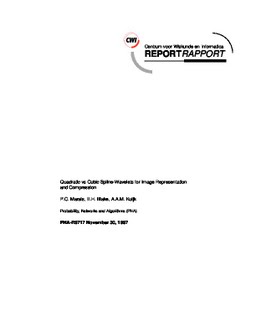1997
Quadratic vs cubic spline-wavelets for image representations and compression
Publication
Publication
The Wavelet Transform generates a sparse multi-scale signal representation which may be readily compressed. To implement such a scheme in hardware, one must have a computationally cheap method of computing the necessary transform data. The use of semi-orthogonal quadratic spline wavelets allows one to maintain a suitable level of smoothness in the MRA whilst enabling cheap computation. Among the other advantages afforded by such a scheme are easily implementable boundary conditions and the existence of either linear or generalized linear phase in the wavelet filters, which has important consequences for signal compression.For image representation, a compressed spline MRA i.e., an MRA in which `redundant' basis coefficients have been ignored, allows us to generate a spline representation of an image which (for low order splines) may be readily displayed on specialised graphics hardware. Such a representation may also be used directly to generate a progressively transmitted image.
| Additional Metadata | |
|---|---|
| , , , | |
| , | |
| CWI | |
| CWI. Probability, Networks and Algorithms [PNA] | |
| Organisation | Signals and Images |
|
Marais, P. C., Blake, E. H., & Kuijk, F. (1997). Quadratic vs cubic spline-wavelets for image representations and compression. CWI. Probability, Networks and Algorithms [PNA]. CWI. |
|

